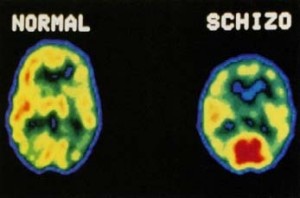Do you know that voice you hear in your head? The one you hear when you read? Or the one that has conversations of its own? We all have it. But now imagine that this voice isn’t your voice anymore. This voice has a life of its own. It tells you things you never thought of; it makes you believe that the people and the places you know are figments of your imagination; it makes you go crazy. This is the harsh reality of many schizophrenics.
A lot of us may have heard about schizophrenia, and a lot of us may know of it as simply meaning you’re crazy. The fancy definition of it is a “profound disruption of basic psychological processes.” Your reality is distorted; your thoughts and your behavior are disturbed. Symptoms of this include hallucination, disorganized speech, and catatonic behavior to name a few.
So how do you get it? Will a schizophrenic’s sneeze render you “crazy” as well? Well, no. As many of you may have guessed already, schizophrenia’s origins lie in biological factors, which include genetic factors, biochemical factors, and neuroanatomy.
Evidence for this conclusion lies in studies that show that the closer you are, biologically of course, in relationship to a person diagnosed with schizophrenia, the more likely you are to also develop the disorder. Furthermore, and this is perhaps some of the strongest proof, studies show that concordance rates are higher for identical twins in comparison to fraternal twins. This clearly shows us that genetics play a crucial role in the development of the disorder.
Neuroanatomy, in addition to genetics, is another biological factor that aids in the development of schizophrenia. With the help of neuroimaging techniques, researchers began to look for anatomical differences in people with the disorder. Early observations led them to discover the enlargements of ventricles – hollow areas lying deep within the core of the brain. The abnormal enlargement in some patients suggested a loss of brain tissue mass that could have occurred during prenatal development. However, this evidence is complicated and unreliable for many reasons. First, enlarged ventricles are only found in a few patients. Second, some individuals without the disorder are also found to have enlarged ventricles. Lastly, the enlargement of the ventricles can be caused by some types of antipsychotic drugs, prescribed for the treatment of schizophrenia. Neuroimaging studies provide evidence of a variety of brain abnormalities in schizophrenia. A variety of specific brain changes found in other studies suggest a clear relationship between biological changes in the brain and the progression of schizophrenia.

The neuroanatomy of schizophrenics differs from those that do not.
Photo Researchers, Inc.
In addition to biological factors, the third factor that contributes to the development of schizophrenia is the presence of excessive dopamine – this is known to be the the dopamine hypothesis. The hypothesis explains why amphetamines, which increase dopamine levels, often aggravate the symptoms (Iverson, 2006). However, there is evidence that refutes this hypothesis, as many individuals do no respond well to dopamine blocking drugs. All in all, the accurate involvement of neurotransmitters in schizophrenia is yet to be determined.
This link discusses the dopamine hypothesis in detail while interviewing a patient
Research on schizophrenia and its cure continue today, in the 21st century. While we have made great progress, a lot remains to be discovered about this order that affects almost 51 million people in our world at one time.
Harleen Kalra


